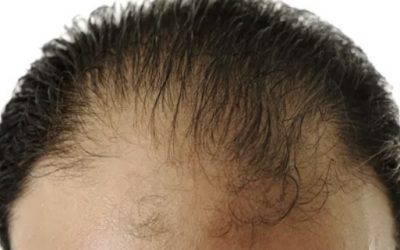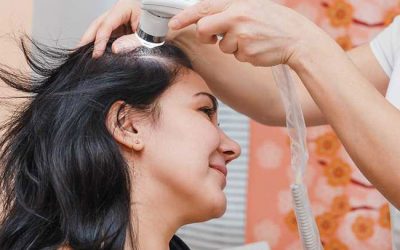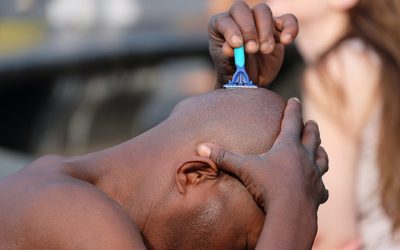 One in every two Australians will get cancer by the age of 85. However, most residents diagnosed in Brisbane or Queensland will, on average, have excellent outcomes after a combination of chemotherapy, surgery, radiation therapy, and other complementary therapies. Chemotherapy is one of the most common treatments for all types of cancer, but has several unfortunate side effects. While the survival rate and treatments for cancer and its side effects improve every year, hair growth after chemo remains a common concern for survivors.
One in every two Australians will get cancer by the age of 85. However, most residents diagnosed in Brisbane or Queensland will, on average, have excellent outcomes after a combination of chemotherapy, surgery, radiation therapy, and other complementary therapies. Chemotherapy is one of the most common treatments for all types of cancer, but has several unfortunate side effects. While the survival rate and treatments for cancer and its side effects improve every year, hair growth after chemo remains a common concern for survivors.
It’s understandable that after cancer you’d want to get back to ‘normal’ as soon as possible. Unfortunately, hair regrowth can take time. Having no hair immediately marks you as ‘ill’ in our society, and can serve as a constant and negative reminder of what you went through. This is why regaining this fundamental part of your appearance is essential to your recovery and self-esteem. The team at Meraki Hair Loss Clinic are experts in guiding people through this transition, so keep reading for our guide to dealing with hair loss, regrowth and chemotherapy.
 Why does chemotherapy cause hair loss?
Why does chemotherapy cause hair loss?
Chemotherapy works by targeting rapidly-dividing cells, a characteristic of cancer cells, and unfortunately it does so indiscriminately, which means that the treatment also targets healthy cells that divide rapidly at the same time, like those found in your hair follicles. Seeing as no two people are alike (and neither are their cancers) some people will have different reactions to chemotherapy treatment than others. This is why some people lose all the hair on their body during chemotherapy, while others experience no loss at all.
Managing your hair during chemotherapy
Hair loss starts occurring about two weeks into treatment, and is usually painless. Many people opt to shave their hair so that they don’t end up shedding hair everywhere, and feel more in control of the experience. If they’ve shaved their hair, some people choose to wear wigs, while others wear scarves and hats, some choosing to wear no head covering at all. If you choose to leave your head uncovered, don’t forget that your scalp will be directly exposed to the elements, and will need sunscreen protection when outdoors, as well as beanie in colder conditions.
Once a final course of chemotherapy has been administered, the majority of people will start seeing their hair come back immediately, or within two to three months. Some people might also find that their regrown hair has a different texture, thickness or colour than it had previously.
Hair loss treatment options for natural hair regrowth
After experiencing chemotherapy, your first priority should be seeking natural solutions for soothing your scalp and hair after what it has gone through. Before making any significant changes, we always recommend that you check with your healthcare provider or oncologist.
In addition to taking the medication prescribed by your healthcare provider/oncologist, you can also speed along your hair regrowth and healing in several ways.Stick to gentle hair care products without harsh ingredients like sodium lauryl sulphate. You can also opt for shampoos and conditioners with growth boosting ingredients such as DHT, niacin and salicylic acid, and hair nourishing ingredients like biotin and protein. In some instances a prescription hair stimulating product can speed the process up, so you should ask your doctor if this would be suitable for your situation.
In terms of what you eat, a high protein diet will speed up hair growth, as well as a diet rich in Vitamin B, B6 and B12, Amino Acids, Vitamin C, Vitamin E, and Inositol, which is found in foods such as beans, leafy greens, and brown rice.It can also be taken as a supplement.
Many people have found that using the Meraki Hair Loss Clinic hair thickening spray offers, also greatly speeds up hair regrowth, so this might be a suitable option for you as well.
Getting your hair back to normal
The most common concern people experience as their hair starts to regrow is how to transition from wearing a wig or headgear, into a new hairstyle, as well how to approach haircuts and colouring. Your best bet would be to find an experienced hairstylist as soon as your hair reaches about three centimetres in length.They will be able to help you style and transition your hair as it grows out, and if you would like to colour, perm or bleach your hair, we advise that you clear it with your healthcare provider or oncologist first.
There is no quick fix for re-growing your hair after chemotherapy, but by taking our advice into account, you’ll be able to navigate the process of getting your hair back on track.
To discuss the best solution for you, book in for your consultation at our Brisbane office. Call 0408 971 895.
Related Tags: Hair Regrowth Brisbane






